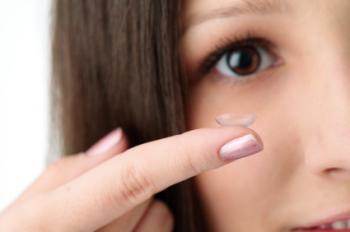![[contact lens]](https://cdn1.medicalnewstoday.com/content/images/articles/308/308177/contact-lens.jpg)
Does the process of putting in a contact lens change the eye microbiome?
Statistics from the US Food and Drug Administration (FDA) show that, globally, around 100 million people wear contact lenses, and over 30 million of them live in the US.
The Centers for Disease Control and Prevention (CDC) urge contact lens users to care for their lenses properly and to follow instructions for wearing, cleaning and storing lenses. Otherwise, infections such as microbial keratitis can result.
The authors of the current study point out that – like the gut, skin and mouth – the eye has a microbiome, or community of bacteria, which helps to protect it from infection.
Previous studies have investigated bacterial contamination of contact lenses, but there is less information about how contact lenses impact the structure and function of the microbiota on the surface of the eye.
Contents
Comparing skin and conjunctival microbiota reveals surprising results
Senior study author Maria Dominguez-Bello, PhD, an associate professor of medicine at New York University School of Medicine, and colleagues wanted to compare the eye microbiota of people who wear contact lenses with the microbial community of those who do not.
Participants in the study were 58 adult outpatients who were seeking eye care.
The scientists compared the bacterial communities of the eye’s surface and the skin under the eye using a laboratory technique called 16s rRNA sequencing. They also analyzed samples from 20 participants, nine of whom wore lenses and 11 who did not, at three intervals during a period of 6 weeks.
The researchers looked at 250 samples in the lab, 116 of which were from cotton swabs of the conjunctiva, 114 from cotton swabs of skin under the eye and 20 from contact lenses.
They were surprised to find a higher diversity of bacteria on the surface of the eye than on the skin under the eye or on the contact lenses.
Results suggested that the microbiota from the surface of the eye of the contact lens wearers was more skin-like, compared with those from individuals who did not wear lenses.
How is the eye microbiome similar to that of skin in lens wearers?
In those who wore lenses, the microbial community on the eye’s surface was rich in the bacteria Pseudomonas,Acinetobacter, Methylobacterium and Lactobacillus.
Those who did not wear lenses had lower levels of Pseudomonas, Acinetobacter, Methylobacterium and Sphingobium.
Moreover, Pseudomonas, Acinetobacter and Methylobacterium were more abundantly present in skin samples of non-lens wearers than in the eye, implying that they could be classed as skin bacteria.
When the researchers compared the microbiota of the eye with that of the skin under the eye, the eyes of people who did not wear lenses showed higher levels of Haemophilus, Neisseria, Streptococcus, Staphylococcus, Rothia andCorynebacterium.
The conjunctiva of people who wore lenses had lower levels of four of these bacteria, namely Haemophilus, Streptococcus,Staphylococcus and Corynebacterium.
For this reason, the researchers conclude that the conjunctival microbiota of lens wearers is more similar to that found on skin, compared with people who do not wear lenses.
The bacterial diversity and composition between the conjunctiva or skin microbiota did not appear to change over time.
Dominguez-Bello notes that the team does not know how these changes occur.
[“source -cncb”]




